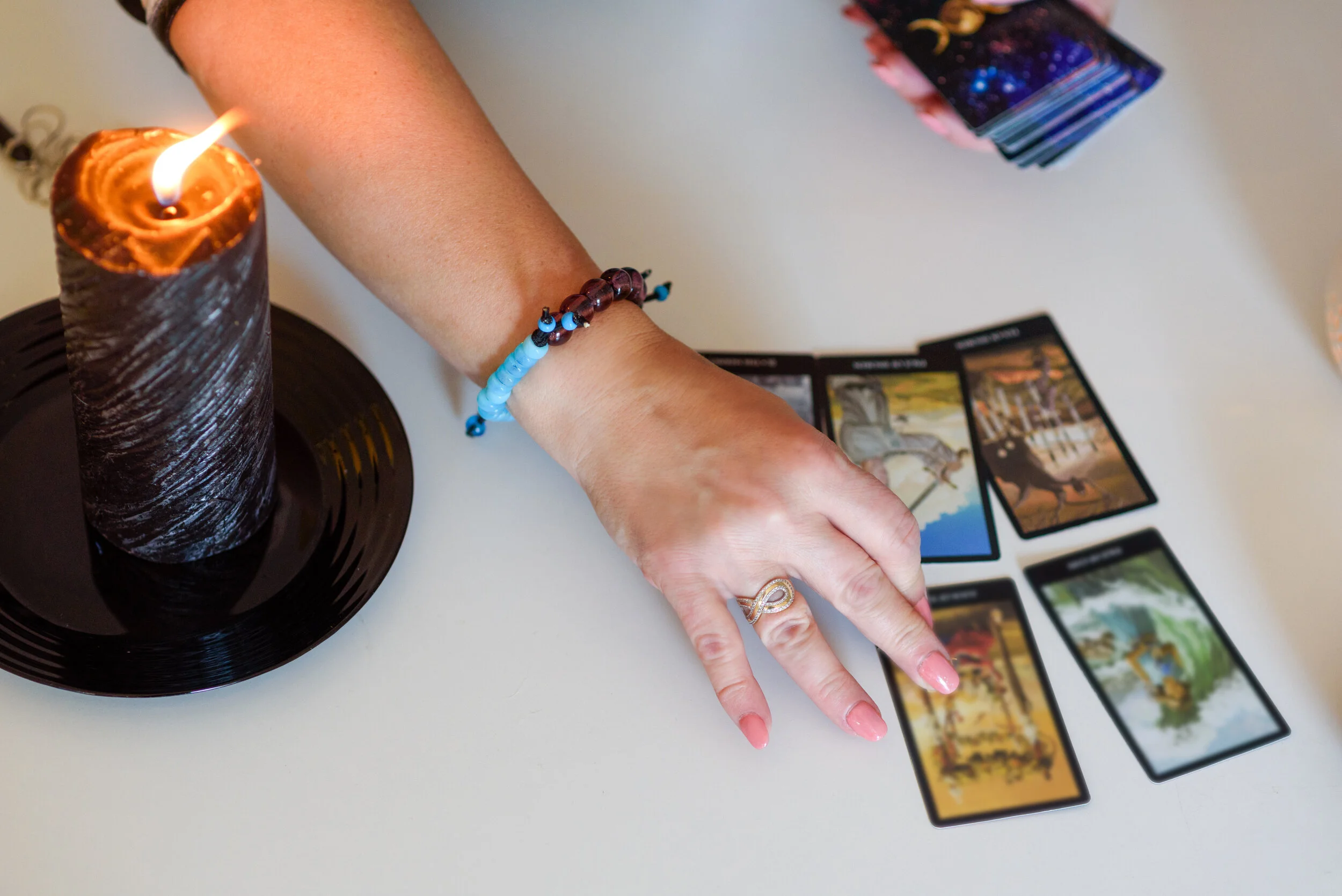Reading Tarot Out of Order
Reading Tarot Out of Order
One of the best ways to become a truly efficient and effective tarot reader is to learn and practice a number of techniques. In fact, the mark of a limited tarot reader is the word ‘always’. Try to avoid ‘always’ seeing and saying the same thing for a particular card, or ‘always’ using the same spread, or ‘always’ interpreting a particular spread using the same techniques.
This past Sunday we had our monthly Tarot Meetup, Cards and Conversation, at Panera Bread in Palm City. I was thrilled that over twenty people were in attendance! Our monthly meetups are a great place to meet old and new friends, share some readings, and learn something about tarot.
Since Sunday happened to be the day of Saturn and Pluto conjunct in Capricorn, an event that won’t happen again for more than five hundred years, I decided to design a series of exercises using the three Major Arcana cards associated with Saturn, Pluto and Capricorn, which are the World, Judgment and the Devil, respectively.
One of the questions I asked folks to consider was what those three cards might mean together in a reading. People came up with some great messages. Yet, I was struck by the fact that most, if not all, of our students and readers felt the need to designate an order to the cards and read the cards in that linear order.
Reading a group of non-positioned cards is a standard tarot technique. Designating an order to the cards (usually the order in which they were pulled) and reading them in that linear fashion is also, obviously, a standard technique. And, it’s an effective technique. Typically, that linear reading becomes a timeline, which turns a non-positioned group of cards into a de facto Past, Present, Future sort of reading, or, a Situation, Obstacle or Action, Outcome sort of reading.
However, there is no rule that says that tarot cards have to be read in a linear fashion, describing a timeline, cause-and-effect, or a situation, action and outcome. While we must be able to read this way, it’s important to know that there are other ways to treat a non-positioned group of cards. The more techniques we know, the more information we can derive from the cards.
It became very clear to me that I have been in remiss in my group leadership. I have not taught my group other methods of handling groups of cards. Guess what we will be doing in our next meeting?
In the meantime, here are some ways to handle a non-positioned group of tarot cards that aren’t linear. These techniques can work with groups of cards as small as two, or as large as five or more.
Let’s use the example of the three cards from our meetup, the Devil, Judgement and the World.
When we read these cards in a linear fashion, we see a story of empowerment that comes from acknowledging and releasing our limiting behaviors.
How else might we read these cards?
We might see the state of the actual world here, where some want to end certain behaviors or traditions (Judgment) while others want to hang on to them (Devil).
We might see a reference to the World Wide Web (World) that connects us all, where we all have a chance to be heard (Judgement), yet also can become addicted and diminished by the attention we pay and the time we waste (Devil).
You can see that when you don’t attach to the order of the cards, the number of stories we can tell expands exponentially.
Other techniques for reading groups of cards include looking at what the cards have in common, to see if there is an overarching theme. If the cards have a similar message, that message can become the overriding takeaway from the reading. If the cards express opposite messages, you may be shining a light on a conflict.
Sometimes similarities in the coloring or images of the cards will give a specific message. I saw the Magician and the Nine of Cups from a version of the Waite deck recently and was struck that both cards had a yellow background, while the Magician’s cloak and the Nine of Cup’s hat were both red. I saw these cards, then, as speaking together with a message of boldness and confidence.
Sometimes cards within a group will be completely dissimilar, sharing neither messages, coloring nor themes. A good technique for blending dissimilar cards is to consider the keywords for each card and see how those keywords can work together in a sentence.
When you release your attachment to the order in which the cards are draw or laid out, or the numeric order of the card sequence, you open yourself to many additional opportunities to receive information.
